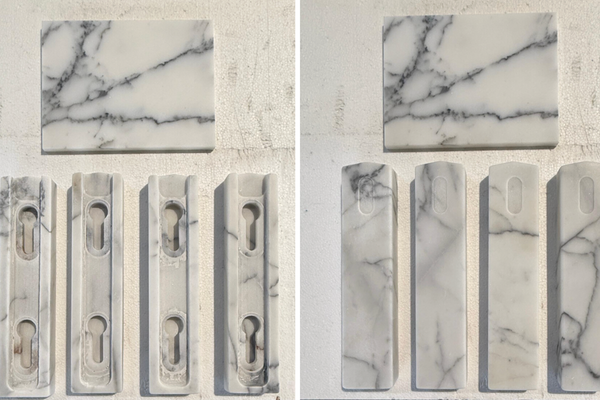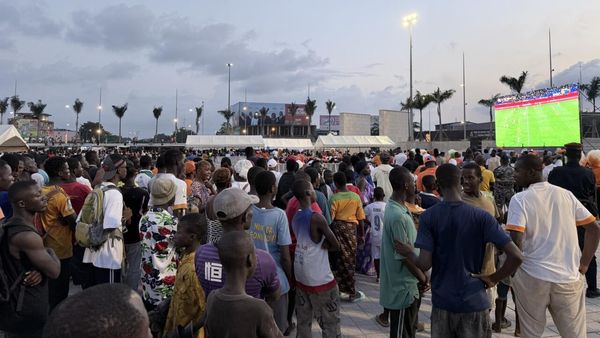Welcome to the Thursday, November 30, 2023 Brew.
By: Juan Garcia de Paredes
Here’s what’s in store for you as you start your day:
- Six states eliminated odd-year elections or consolidated election dates in 2022 and 2023
- Ten legislators have switched parties this year—fewest in an odd year since 2015
- Echelon Insights’ Patrick Ruffini talks polling in the latest episode of On the Ballot
Six states eliminated odd-year elections or consolidated election dates in 2022 and 2023
During the 2022 and 2023 legislative sessions, several states changed their election calendars, including six that eliminated odd-year elections or consolidated election dates. North Carolina passed legislation removing some odd-year election dates, while Idaho, Louisiana, Texas, Utah, and West Virginia consolidated election dates within a year.
Whether states conduct odd-year elections matters for voter turnout. The degree to which election timing affects voter turnout varies by state and by jurisdiction, but studies comparing turnout for local off-cycle elections to voter turnout in on-cycle elections universally show significantly lower turnout in off-cycle elections.
North Carolina
From 2022 to 2023, North Carolina approved six bills that removed some odd-year elections, with each bill addressing elections in specific jurisdictions. The changes did not entirely eliminate odd-year elections in the state but did reduce the overall number of these elections.
North Carolina also enacted two other bills that did not explicitly remove odd-year elections but specified that certain elections must occur in even years. The state also passed one bill that consolidated elections within a year.
Nationwide
During the 2022-2023 period, 18 bills were introduced nationwide to eliminate odd-year elections, including those in North Carolina. All but one addressed local elections only.
The most sweeping bill, Washington’s HB1727, would have eliminated that state’s odd-year statewide general election. The bill was introduced in 2022 but did not advance out of committee. The other 17 bills applied only to school board or municipal elections and would not have entirely eliminated odd-year elections in their respective states.
States also passed eight bills that consolidated election dates within a single year, whether in an even or odd year:
- In Idaho, H138 consolidated the presidential primary with the regular statewide primary.
- In West Virginia, HB4353 required a number of ballot questions to appear at regular statewide election dates.
- The remaining six bills dealt specifically with municipal or school board elections.
Overall, between 2022 and 2023, legislators introduced 57 bills that would consolidate election dates within a year.
Partisan sponsorship
Republicans sponsored 53 bills that eliminated odd-year elections or consolidated elections within a year, more than the 14 such bills that Democrats sponsored. Just four bills had bipartisan sponsorship.
Of the 14 bills that eventually became law, eight came in states with divided government while six came in states with Republican trifectas. Only one bill enacted in a state with partisan trifecta control was sponsored by the minority party, Texas’ SB1131.
While many of the considered bills from 2022 and 2023 were narrow, applying only to specific jurisdictions or elections, lawmakers in several states have pursued broader action:
- In Idaho, two bills, S1079 and H171, were considered that would have eliminated odd-year municipal and school board elections statewide. Neither ultimately passed. Idaho did consolidate its presidential primary with the regular local and statewide primary election date through H138.
- In New York, an active bill, A4282, would eliminate all odd-year municipal elections except in New York City. This bill passed the New York State Senate 39-29 on June 9.
- In Oklahoma, 14 Republican-sponsored bills were introduced that would have consolidated election dates within a year. None of these passed.
- In West Virginia, lawmakers enacted HB4353, which required a number of ballot questions and other local elections to occur at the same time as regular state elections.
Finally, in addition to the bill types discussed above, lawmakers in two states, Louisiana and Texas, introduced legislation that would have “deconsolidated” elections, meaning they would have allowed specific jurisdictions to move their election date away from a regular statewide election date.
As of Nov. 28, at least 46 states hold some elections in odd years, not including special or recall elections. Of these, five states—Kentucky, Louisiana, Mississippi, New Jersey, and Virginia— hold odd-year state elections for governor and other executive offices. Four of those states—all but Kentucky—also hold odd-year state legislative elections.
Ten legislators have switched parties this year—fewest in an odd year since 2015
As the year winds down, let’s take a look at a number we’ve been following closely in recent years—state legislative party switches.
As of Nov. 29, 10 state legislators have switched political parties in 2023. That’s the fewest for an odd-year since 2015, when seven members switched parties, but more than the odd-year average of six since 1994. The most party switches for an odd year since 1994 occurred in 2021, when 15 state legislators switched parties.
Of the 10 state legislators who have switched parties this year:
- One switched from Republican to Democrat. That’s in line with the odd-year average of one since 1994. One Republican switched to Democrat in 2021, and three did in 2019.
- Five switched from Democrat to Republican. That’s more than the four who switched in 2021 and the one who switched in 2019. It’s also more than the odd-year average of three since 1994.
- Three switched from major party to independent or minor party. That’s less than the 10 who switched in 2021 and the eight who switched in 2019, but more than the odd-year average of four.
- One switched from Independent to Democrat
Counting both even and odd years, Ballotpedia has identified 173 state legislators who have switched political parties since 1994, an average of six party switches per year. Mississippi had the most party switches between 1994 and 2023, with 20, followed by Louisiana (17) and Georgia (16).
The most recent incumbent to change party affiliation was Georgia state Rep. Mesha Mainor, who left the Democratic Party in July to become a Republican.
As of Nov. 22, Republicans controlled 54.82% of all state legislative seats nationally, while Democrats held 44.34%. Republicans held a majority in 57 chambers, and Democrats held the majority in 40 chambers. Two chambers (Alaska House and Alaska Senate) are organized under multipartisan, power-sharing coalitions.
Echelon Insights’ Patrick Ruffini talks polling in the latest episode of On the Ballot
In the latest episode of On the Ballot, Editor-in-Chief Geoff Pallay sits down with Republican Pollster Patrick Ruffini. Ruffini is the co-founder of Echelon Insights, a polling and analytics firm that has advised Republican and international campaigns as well as Fortune 500 companies and advocacy groups. Before co-founding Echelon, Ruffini worked for President George W. Bush, first with the Republican National Committee, then in Bush’s administration and on his re-election campaign.
Ruffini’s writing and research regularly appear in the media, and he published a book earlier this month called Party of the People: Inside the Multiracial Populist Coalition Remaking the GOP.
During the conversation, Ruffini discusses some of the work Echelon does for political campaigns and for companies and brands. He also discusses how polling changed when digital methods were introduced, how new tech might change polling in the next few years, and what to expect in next year’s election cycle. Plus, he tells listeners the most common questions he gets about polling.
Want to learn more? Click the link below and listen to our full conversation with Patrick Ruffini! And for more insights about today’s polling scene, check out our September interview with Democratic Pollster Anna Greenberg.
Remember, new episodes of On the Ballot drop every Thursday afternoon. If you’re reading this on the morning of Nov. 30, there’s still time to subscribe to On the Ballot on your preferred podcast app and catch this week’s release!







